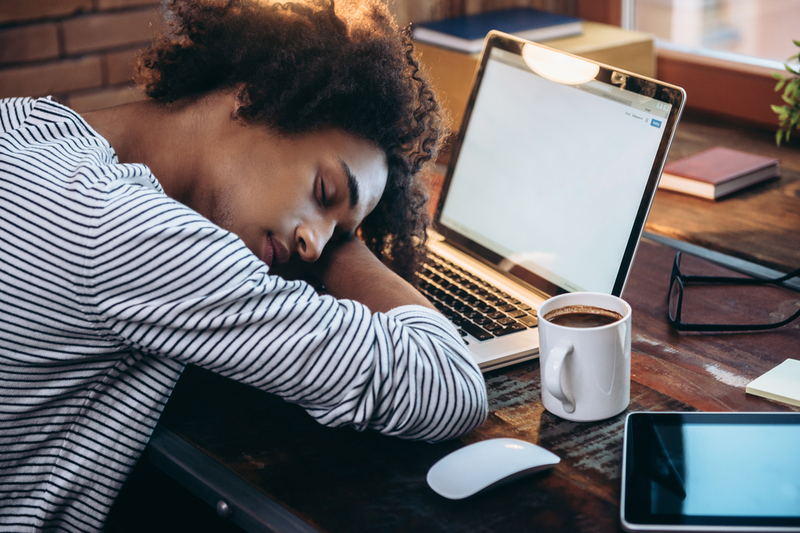I once knew a girl who was afraid to take naps during the designated nap time in kindergarten. Her dad, well-intentioned as he may have been (who was likely a very driven, albeit misguided man), had somehow given her the impression that taking naps was “lazy”. Every day, she would struggle to stay awake during nap time, because she didn’t want to be lazy.
Fortunately, kindergarten teachers know that kindergarteners can only make it so long in the day before the body and mind have been worn down, exhausted and need to be recharged. Even a ten-minute nap would replenish what had been depleted by excessive playgrounding, coloring, and—probably most taxing—learning and soaking in a crazy amount of information every day.
And, if coloring inside the lines and learning your alphabet tuckers you out, try studying stock charts and staring at a monitor for hours on end. It’s easy to over-extend our energy.
Yet, in today’s world, banker’s hours are a thing of the past. Most people don’t pull a nine-to-five and calls it quits for the day. Lots of people who hold down day jobs leave for work (or the gym, or daycare or whatever) around 7:00 in the morning, work through their lunch hour and are lucky to arrive home before 6:00 pm. And, these people feel stuck doing it, because, heck—the mortgage or rent has to be paid. Who has time for naps?
Download a cheat sheet of this post.
Unfortunately for these people, there are limited options, when it comes to napping. I know one guy who insists on 15-minute power nap on the floor of his office at work during his lunch “hour” (which we all know isn’t really an hour long anymore, so it’s more like a half hour).
But, the fact that everyone moves so fast and that we’re all trying to cram so much into every single day doesn’t mean that rest isn’t important—whether that rest is in the form of a power nap, sipping tea on the back porch swing or just staring vacantly at the inside of your eyelids.
We’re big fans of power napping and taking regularly scheduled breaks, so long as they are well-planned, so that they don’t interfere with regularly scheduled work. You can make time for ANYTHING, if you make it a priority. But, before you utter the tired phrase “I don’t have time!” Bite your tongue! We are all created equal in this single regard—we all get exactly 24 hours every day to dispose of as we see fit. If multi-millionaire CEOs can “find” time for a power nap, you could too. Sacrifices may have to be made, of course, but it can be done.
So, why should you make naps and breaks a priority?
You’re in good company. According to the National Sleep Foundation, Winston Churchill, John F. Kennedy, Ronald Reagan, Napoleon, Albert Einstein, Thomas Edison and George W. Bush are all known to have valued an afternoon nap. Read that list again and tell me that you can’t “find” the time!
Today, it’s customary to carry some nap-guilt around, especially if you hail from the Western world. But, we’re here to tell you—backed up by Ronny and JFK—that napping isn’t slacking. It’s actually productive. 
Napping helps you to hold yourself together after a stressful day. You’ve seen it—you’re in the grocery store around 2:00pm and there’s a mother trying her best to pacify her angry toddler who is tantruming to beat the band. She shhhh’s, she coos, she yells. She scolds, she resorts to bribery. But, nothing works. Why? It’s naptime! The toddler is tired.
We see it in kids all the time, but fail to make the connection that it is also often true for us. Children have not yet learned to compensate for this feeling of irritability that comes with being overly tired. Not exhausted, mind you—just tired and slightly incapacitated. Kids are taught that poor behavior is unacceptable, even when tired.
As we age, we hone that skill and most of us do pretty well to unconsciously squash our irritability that comes mid-afternoon, particularly on stressful days. We might not even realize we feel subpar. Resting, even for 20-30 minutes (not hours or anything!) can restore us to our more pleasant selves. And, who doesn’t want to be that?
It’s good for your heart. We’re not making this stuff up! According to a study published in the Archives of Internal Medicine, people who nap midday, at least three times per week, are 37 percent less likely to die of heart disease. Men, in particular, are 64 percent less likely. It’s important to note that this study was one of the biggest napping studies ever conducted.
The study was unclear as to why napping had these beneficial heart effects, but two theories were proposed. “Napping may help deal with the stress of daily living,” said Michael Twery, who directs the National Heart Lung and Blood Institute’s National Center on Sleep Disorders Research. “Another possibility is that it is part of the normal biological rhythm of daily living. The biological clock that drives sleep and wakefulness has two cycles each day and one of them dips, usually in the early afternoon. It’s possible that not engaging in napping for some people might disrupt these processes.”
That napping is beneficial to the heart comes as no surprise to anyone in the medical profession, though, because countries such as Greece, Italy and Spain—where napping is common—have lower rates of heart disease.
It will increase your productivity. According to a 2007 study of human cognition, our cognitive function fluctuates throughout the day. In plain English- people get considerably suckier at absorbing new information, juggling schedules and learning new tasks, as the day wears on.
This is caused by a combination of hormone fluctuations, brain waves and body temperature—all of which wreak havoc on our energy levels—and all of which can be set right again, with a short rest or nap. So, the next time you poo-poo the idea of fitting a nap into your hectic schedule, ponder this: can you afford NOT to? Can you afford to be less productive for the last few hours of your working day? Can you afford to miss a beat with your trades? Can you afford to make a misstep on exiting an important position? Wouldn’t it be worth 15 minutes of your day to increase your productivity and quality of function? We think so!
So, how does one go about taking a nap? Naps, like too much of any good thing, have the potential to run amok. It’s important to be disciplined about your naps—and about your sleep in general—if you want to be productive.
1. Set a designated nap place. If you’re trading from home, this is an easy one. Choose the same spot every day and make sure it’s not where you trade. Don’t, for instance, put you head down on your desk and take a random snoozer. The disciplined trader plans his daily life and ordinary tasks the way he (or she!) plans trades—methodically.
Choose a comfy couch or a daybed, or your own bed, if you’re at home. If you’re on the road, your options will be significantly limited and you’ll have to be creative. If you work in an office, keep a pillow tucked away somewhere and snuggle up on the floor. If you work in an environment where there is no space for napping available, you can always make this your first to-do item when you arrive home from work.
When we suggest that you’ll have to be creative if you’re on the road, there are some crazy options out there. Take this “durable covering that encompasses the whole head” idea, for instance. It’s called an Ostrich Pillow (get it? Because they bury their head in the sand…). 
This is designed so you can lay your head against a bus window, your desk at work, a park bench, or….heck… a bathroom stall. Advertised as a bean bag for your head, this will set you back a cool $99.99. We haven’t tried it ourselves, but why not? If you do happen to try it, give us a shout out and let us know what you think!
2. Set a designated napping time. A moving target is hard to hit. Without a designated time for napping, you might not “find time” to take one every day. Conversely, unscheduled napping could get carried away, if left unchecked—it’s easy to let that 15-minute daily power nap slip into a two-hour deep coma-like sleep that causes you to miss deadlines or trades. Schedule your nap (or rest) at a specific time of day—preferably during the normal trading lulls—and stick with it.
3. Don’t get discouraged. Not everyone can sleep on command. And, worrying about being able to fall asleep within a short 10- or 15-minute window will surely prevent you from falling asleep. Like any skill, practice makes perfect. The first few days, or even weeks, you might not be able to fall asleep. Worrying that you might not will only make it worse. Just let it go.
Instead, rest and lie peacefully for your 10 or 15 minutes, whether you actually sleep or not. Don’t have your heart set on “sleeping” for 15 minutes. Lie down for 15 minutes and, if you didn’t fall asleep, just get up and resume your normal activities. Most people will find that their body will adjust to the new direction. Within a short while, you’ll be able to fall asleep fairly quickly.
4. Set an alarm. Between your phone and your watch, there’s no excuse to oversleep your nap. Don’t rely on your willpower alone to wake you from your princess-like slumber after 10 or 15 short minutes. Set you alarm (don’t hit snooze), then rise and shine! Oversleeping, which causes you to fall into a deeper state of sleep, will only make you feel groggy and make it more difficult to resume your daily activities.
5. Turn off your ringer. I know, I know—this is a big ask, but you’ll be sorry if you don’t. There is nothing like your wife texting to ask what movie you want to see this weekend approximately two seconds after you fall asleep. The world will not stop if you turn off your ringer. We promise.
Try it on for size for a few weeks and let us know how it goes!
